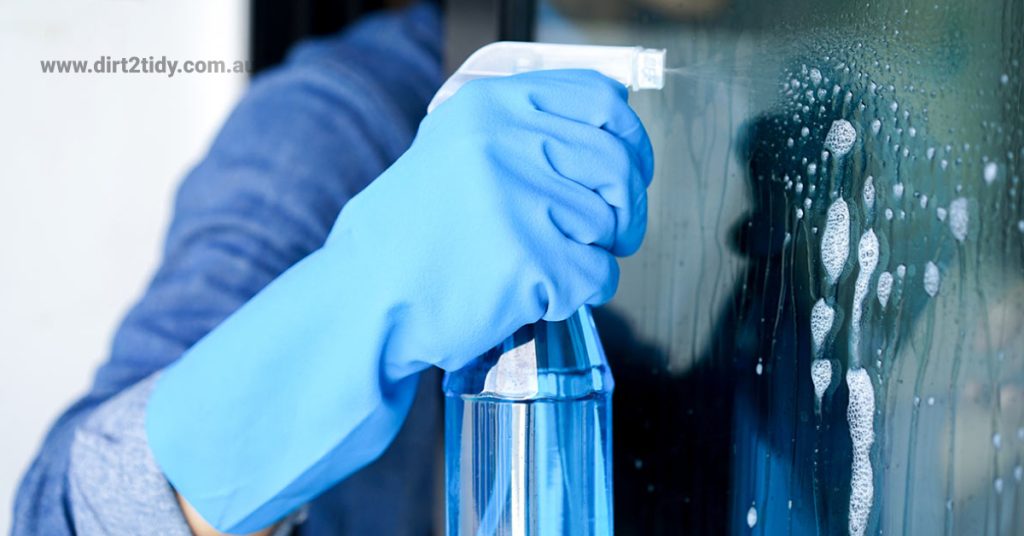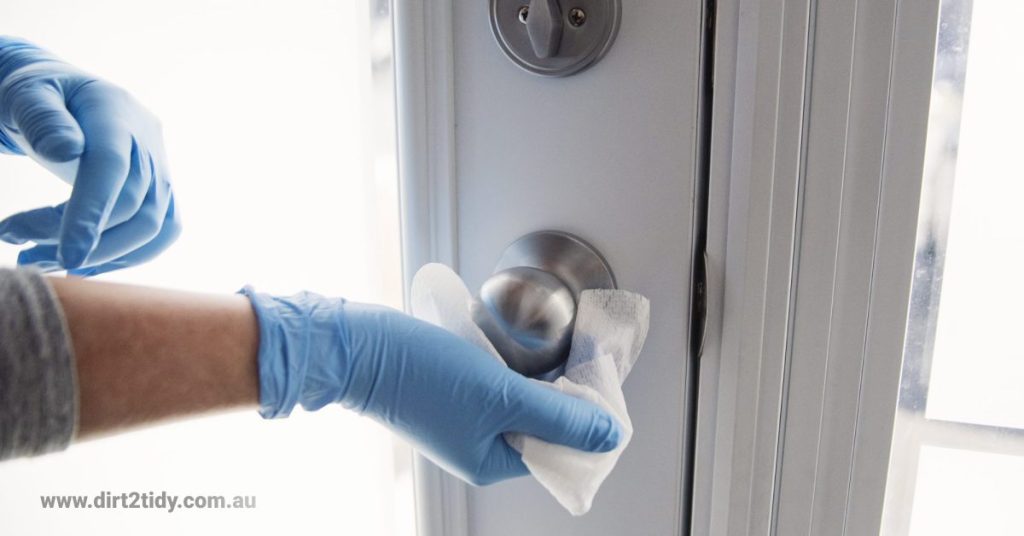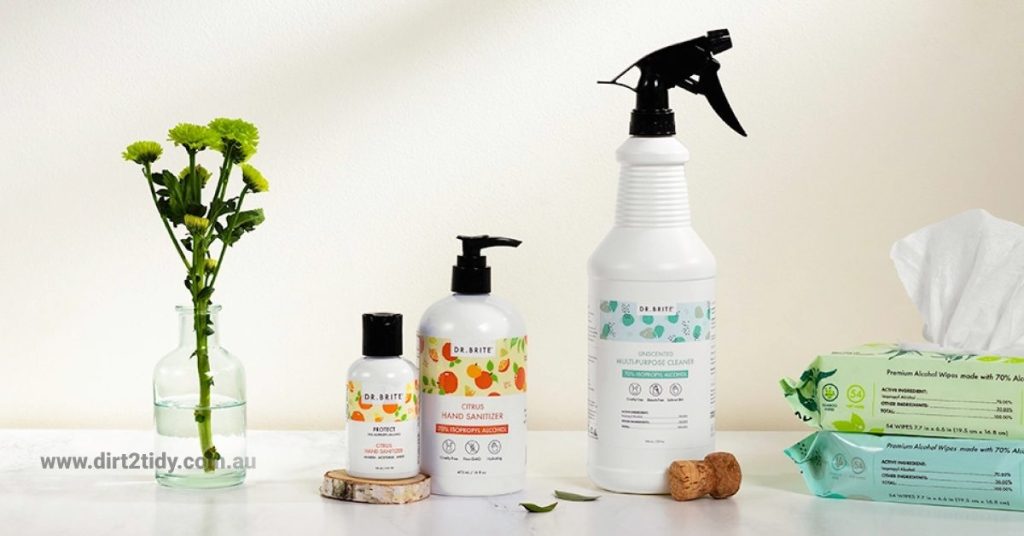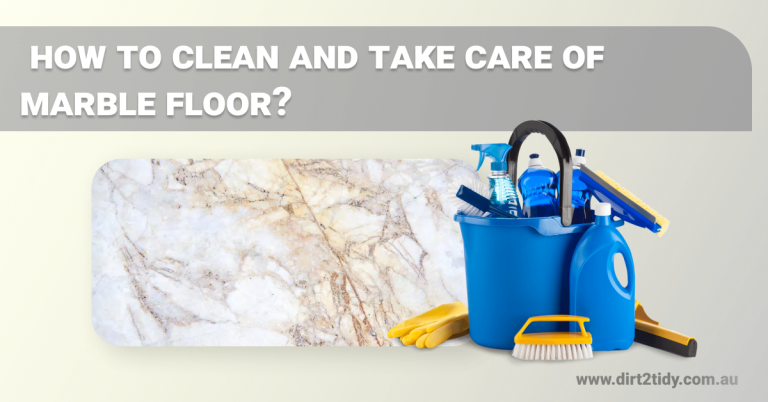Cleaning and disinfection are elements of a comprehensive health program. Vaccination is the first line of defence against influenza (flu). Attendance at work is also advised.
Handwashing is recommended often. Here are some cleaning and disinfection methods to help reduce the spread of flu.
Distinguish between cleaning, disinfection, and sanitising
Cleaning eliminates bacteria, filth, and pollutants. Cleaning surfaces with soap (or detergent) and water removes bacteria and infectious diseases. This method does not definitely destroy bacteria, but it reduces their numbers and the likelihood of illness transmission.
It disinfects surfaces and items like door handles. Disinfecting uses chemicals to eliminate bacteria on touching surfaces. This method does not inherently clean or disinfect surfaces, but by destroying bacteria on a surface after cleaning, it reduces the risk of illness and may sometimes be visibly dirty.

Sanitizing cleaning products reduce the number of germs on surfaces or items to a safe level by routine cleaning. This method reduces the danger of infection transmission by cleaning or disinfecting surfaces or items.
Clean frequently handled surfaces and objects
Follow your usual cleaning and disinfection procedures like hospital-grade. Normal daily cleaning includes desks, counters, doorknobs, computer keyboards, hands-on learning materials, and toys. Some schools may require daily disinfection. Disinfecting certain school spaces, such as bathrooms is standard protocol.
Clean visible filthy surfaces and items immediately. Use gloves and other usual measures to avoid contact with dirty surfaces or items. Clean and disinfect the surface after the spill.
Do regular cleaning and disinfection
It’s critical to match your cleaning and disinfection methods to the bacteria you wish to eradicate. On average, flu viruses may survive and infect people for up to 48 hours after being deposited on a surface. To reduce the spread of flu, public places do not need to be closed. The public cannot function properly due to excessive absence due to a flu outbreak, thus extra cleaning and disinfection are not required.
Flu viruses are fragile and can be removed or killed by ordinary cleaning and disinfection procedures. Wiping off walls and ceilings, using deodorizers periodically, and fumigating is not essential or suggested. These processes can cause significant eye, nose, throat, and skin irritation, as well as asthma symptoms.
Consider your HVAC system in air disinfection
Heating, ventilation, and air conditioning (HVAC) systems play a surprisingly important role in keeping indoor air clean and reducing the spread of germs—especially during flu season. Your HVAC filters act as the first line of defense, trapping airborne particles such as dust, pollen, and even some bacteria before they circulate throughout your space. To keep these filters effective, make it a habit to check and replace them regularly; filters are widely available in bulk, making this both cost-effective and convenient. Keep a supply stored close to your system for easy access.
However, even with regular filter changes, it’s possible for contaminants to accumulate inside the unit itself. Scheduling an annual inspection and professional cleaning of your HVAC system ensures that trapped germs, viruses, and dust don’t get recirculated back into your home. Not only does this help maintain healthy air quality, but it also keeps your HVAC unit operating smoothly and efficiently. Good air circulation, backed by a well-maintained system, supports your broader cleaning and disinfection plan, offering an additional layer of protection against the flu and other infectious illnesses.

Reduce airborne particles with HVAC filter maintenance
Regularly changing the filters in your heating, ventilation, and air conditioning (HVAC) system is a straightforward way to cut down on airborne irritants circulating in your home or workplace. When maintained properly, HVAC filters help trap a wide range of particles, including:
- Dust and dirt
- Pet dander
- Pollen
- Mold spores
- Fine particulate matter from everyday activities
- Certain bacteria, viruses, and other pathogens
Cleaner filters mean fewer of these particles are left floating in the air—making it safer and healthier to breathe, especially during flu season. High efficiency filters, such as HEPA filters, and options certified by third-party organizations (like the American Lung Association or Asthma and Allergy Foundation of America), can further improve air quality. Be sure to follow your manufacturer’s recommendations for the correct filter type and replacement schedule to maintain peak effectiveness.
Cleaning and disinfection
Always read and follow cleaning and disinfection labels and use personal protective equipment. Wash surfaces to eradicate bacteria. Rinse with water and disinfect using an EPA-registered disinfectant. Check the label to see if the EPA has authorized the product for use against influenza A.
If a surface is not obviously unclean, use an EPA-registered product that cleans and disinfects (kills germs). Read the label guidelines carefully, since there may be a different technique for cleaning or disinfecting the product. For disinfection, the substance must stay on the surface for some time.
Disinfect frequently handled electrical devices like phones and PCs. Follow the instructions for using disinfectant wipes. It may need more than one wipe to keep the surface moist for the specified duration. Make sure the electronics can survive cleaning and disinfection with liquids.
Why choose natural or homemade disinfectants?
Natural or homemade disinfectants offer several advantages for those looking to clean safely and effectively. While commercial products can be powerful, they sometimes come with strong odors, harsh chemicals, and a higher price tag. Using ingredients such as vinegar, baking soda, lemon juice, or even a splash of vodka, you can craft solutions that are tough on germs yet gentle around children, pets, and sensitive skin.
Natural disinfectants have clear benefits:
- Cost-effective: Many homemade solutions rely on pantry staples, saving you money when compared to frequent purchases of store-bought options.
- Safer air quality: Natural ingredients typically emit milder scents and produce fewer fumes, reducing the risk of irritation to the eyes, nose, and throat—especially important for those with allergies or asthma.
- Eco-friendly: Making your own cleaners cuts down on single-use plastic bottles and harmful chemicals entering the water supply.
- Customizable: You can tweak recipes to suit specific cleaning tasks—adding tea tree oil for antimicrobial properties, for example, or lemon for a fresh scent.
Remember, even after thoroughly washing surfaces with soap and water, following up with a natural disinfectant can help eliminate lingering germs. For those short on time, plenty of natural disinfectant options are available through retailers focused on eco-friendly products or can even be found at local farmers’ markets.
Homemade vs. Store-Bought Disinfectants
You might wonder whether homemade disinfectants measure up to those glossy bottles at the supermarket. While commercial disinfectants—especially those registered with the EPA—are tested and validated for their effectiveness against viruses like influenza, many homemade alternatives focus more on reducing general germs rather than eliminating specific pathogens.
Common homemade solutions often use ingredients such as:
- White vinegar: Known for its mild antibacterial properties, vinegar can help cut through grime but does not reliably kill all types of disease-causing viruses.
- Hydrogen peroxide: At a concentration of at least 3%, hydrogen peroxide can be an effective disinfectant on certain surfaces and is frequently used for household cleaning.
- Rubbing alcohol (isopropyl alcohol at 70% or greater): This can effectively kill a range of bacteria and viruses when used correctly.
- Baking soda and essential oils: While these add cleaning power and fragrance, they are not replacements for proven disinfectants.
If you opt for homemade cleaning solutions, remember their limitations: not all naturally derived mixtures are as effective at eliminating harmful pathogens as commercial products designed and tested for disinfection. For routine cleaning, homemade options can be more gentle and environmentally friendly, but when illness prevention is the priority—especially during flu season—EPA-registered and approved disinfectants remain the safer bet.
As with any cleaner, always test in a small area first to avoid damaging surfaces, and be cautious about mixing ingredients (especially vinegar with bleach, which produces toxic fumes).
Why schedule an annual HVAC inspection?
Routine HVAC maintenance keeps your system running efficiently—and helps protect your indoor air quality, too. Even with regular filter changes, dust, allergens, and microbes can accumulate deep within your heating and cooling system. Over time, this buildup can reduce the effectiveness of air filtration and even circulate unwanted particles through your home or classroom.
Having your HVAC system professionally inspected and cleaned at least once a year ensures that hidden debris, mold, or germs don’t get a free ride back into your environment. Annual checkups also help catch minor issues before they cause breakdowns, keeping the air cleaner and the system energy-efficient. Well-maintained units from brands like Carrier, Trane, or Lennox can better support a healthy indoor space and reduce the spread of respiratory illnesses—especially important during cold and flu season.
Safe product use
Pay heed to product labels’ warnings and guidelines. Cleaning and disinfecting products typically require gloves or eye protection. Gloves should always be used while dealing with bleach solutions.
Never combine cleaners and disinfectants unless the labels say it’s okay. Certain product combinations (such as bleach and ammonia cleaners) might cause significant harm or death.
Ensure that cleaning employees, instructors, and anyone who uses cleaners and disinfectants read and understand all labels. This may necessitate bilingual educational materials and training.
Waste management
Wear gloves if you are waste handling regulations require it. Place no-touch trash containers easily accessible.
After usage, toss discarded cleaning goods in the garbage. Empty garbage bins without touching used tissues. After emptying wastebaskets and handling used tissues, wash your hands with soap and water.

Cleaning and disinfection safety
Experts believe that thorough cleaning and disinfection of environmental surfaces is critical to infection prevention. But manual washing and disinfection in hospitals are typically unsatisfactory. This is owing to the fact that many Environmental Services agencies have staffing concerns.
A lack of antimicrobial action of some disinfectants against healthcare-associated infections may also reduce disinfection effectiveness. Existing disinfectants like hydrogen peroxide-based liquid surface disinfectants can be replaced by improved products like electrolyzed water (hypochlorous acid) and cold atmospheric pressure plasma, which are also effective disinfectants.
How often should you change your HVAC filter to maintain clean indoor air?
To help maintain a healthier indoor environment, it’s important to replace your HVAC filter regularly—ideally, every month. Over time, airborne contaminants such as dust, pet dander, allergens, and even microbes can accumulate in the filter. When left unchanged, a clogged or dirty filter could recirculate these particles throughout your home, counteracting your cleaning and disinfection efforts.
Monthly replacement is especially crucial during periods of heavy use, such as during winter and summer, or in homes with pets, allergies, or high traffic. Filters are widely available in packs, making it easy to keep spares on hand. Storing them near your HVAC system can serve as a handy reminder.
A clean filter not only supports better air quality but also allows your heating and cooling system to operate efficiently—helping to reduce energy use and, by extension, the spread of indoor pollutants.
The use of metals such as copper or silver to coat medical equipment, or applying liquid chemicals having permanent antibacterial action to surfaces, are other options worth investigating.
- gloves, surgical mask, eye protection, and face shield
- Hands should be washed with soap and water before and after protective gear use.
- Put gloves and masks in a leak-proof bag.
- Be sure to cover your entire body if you encounter respiratory secretions or other bodily fluid on surfaces.
- Ask anybody in a room you need to clean to wear a surgical mask.
- Safe use of chemical disinfectants
- To guarantee safe and efficient use of cleaning and disinfection solutions, always read the label. Depending on the product, you may need to wear gloves, goggles, or glasses.
- Prevent suffocate (for example, open windows and run fans).
- Use only the labelled amount.
- If diluting with water is required, use room temperature water (unless stated otherwise on the label).
- Identify diluted cleaning or disinfecting solutions.
- Keep chemicals away from children and pets.
- Don’t combine chemicals.
- Cleaning and disinfection agents can cause significant injury if eaten, drank, inhaled, or applied directly to the skin.
- Never clean or disinfect people or pets.
Asthmatics should be given special consideration. Some cleaning and disinfecting agents might cause asthma symptoms. Learn how to disinfect to avoid COVID-19 without triggering an asthma attack.





